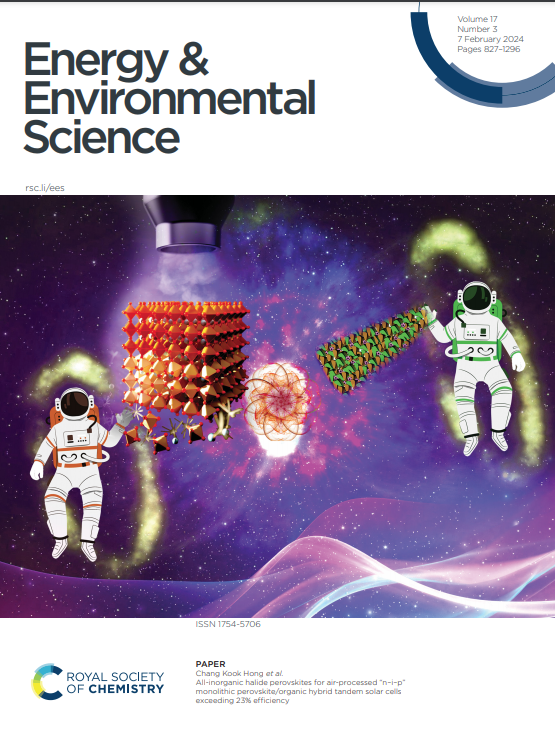Operando observing hydrogen evolution in commercial lithium-ion batteries
IF 30.8
1区 材料科学
Q1 CHEMISTRY, MULTIDISCIPLINARY
引用次数: 0
Abstract
Operando monitoring of the H2 evolution within lithium-ion batteries is essential for decoding their thermal runaway mechanism and preventing fires. Here, we track the H2 evolution over multiple charging‒discharging cycles of commercial 18650 batteries via an operando surface‒modified fiber Bragg grating sensor. Time-resolved reversible adsorption‒desorption and irreversible formation of H2 are discovered to be associated with the temperature inside batteries. Notably, we experimentally observe unique negative temperature coefficient (NTC) behaviour for the H2 evolution, in which H2 concentration inversely changes with the internal temperature above a critical temperature. Further numerical and analytical analyses reveal the H2 evolution mechanism through Fickian diffusion and Soret diffusion, indicating the NTC behaviour can mitigate the severe hazards of thermal runaway. This work holds key values for advancing the design of next-generation high-safety batteries.Operando在商用锂离子电池中观察氢的演化
对锂离子电池内部氢气演化过程的实时监测对于破解电池热失控机制和防止火灾至关重要。在这里,我们通过一个operando表面改性光纤Bragg光栅传感器跟踪了商用18650电池在多个充放电循环中的H2演变。时间分辨的可逆吸附-解吸和H2的不可逆生成与电池内部温度有关。值得注意的是,我们在实验中观察到H2演化的独特负温度系数(NTC)行为,其中H2浓度与内部温度成反比,高于临界温度。进一步的数值分析和解析分析揭示了氢气通过Fickian扩散和Soret扩散的演化机制,表明NTC行为可以减轻热失控的严重危害。这项工作对于推进下一代高安全性电池的设计具有关键价值。
本文章由计算机程序翻译,如有差异,请以英文原文为准。
求助全文
约1分钟内获得全文
求助全文
来源期刊

Energy & Environmental Science
化学-工程:化工
CiteScore
50.50
自引率
2.20%
发文量
349
审稿时长
2.2 months
期刊介绍:
Energy & Environmental Science, a peer-reviewed scientific journal, publishes original research and review articles covering interdisciplinary topics in the (bio)chemical and (bio)physical sciences, as well as chemical engineering disciplines. Published monthly by the Royal Society of Chemistry (RSC), a not-for-profit publisher, Energy & Environmental Science is recognized as a leading journal. It boasts an impressive impact factor of 8.500 as of 2009, ranking 8th among 140 journals in the category "Chemistry, Multidisciplinary," second among 71 journals in "Energy & Fuels," second among 128 journals in "Engineering, Chemical," and first among 181 scientific journals in "Environmental Sciences."
Energy & Environmental Science publishes various types of articles, including Research Papers (original scientific work), Review Articles, Perspectives, and Minireviews (feature review-type articles of broad interest), Communications (original scientific work of an urgent nature), Opinions (personal, often speculative viewpoints or hypotheses on current topics), and Analysis Articles (in-depth examination of energy-related issues).
 求助内容:
求助内容: 应助结果提醒方式:
应助结果提醒方式:


